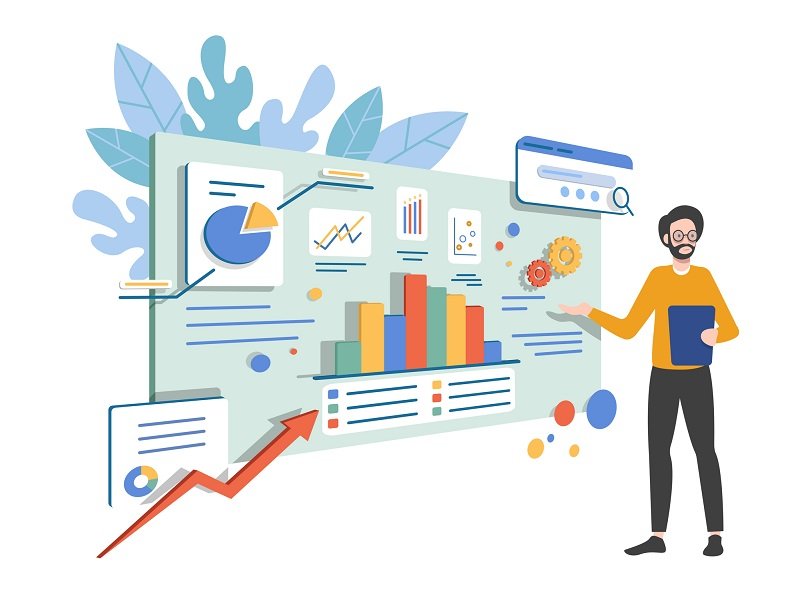How to Invest in Digital Advertisement
According to GroupM, approximately $110.1 billion was spent only on digital advertising in 2020. This amount spent on digital marketing translates to around 51% of the total spending, excluding political ads.
The exact number was projected to rise exponentially in the following years. For instance, this figure shifted to $130 billion (about 54%) of the overall $240 billion spent on adverts aimed at digital avenues. As it turned out, the prime beneficiaries of this spending were Amazon, Facebook, and Google.

As a matter of fact, these three advertising platforms have so far held in the United States digital advertising market without showing signs of slowing down any time soon. Nonetheless, when you invest in digital marketing, you want to be sure it’ll pay off. As such, below are helpful tips to help you in this quest:
1. Spend Wisely During the Early Stages of Your Marketing Campaigns
Even though social media marketing and digital spending are increasing, this doesn’t imply that you should spend more money on your particular ad campaigns. What matters in this case scenario is how you handle your marketing budget.
Whether you’re running a small business or a large company, you should consider ad spends of less than $50 as you learn more about your target audience. That is according to Kayla Moses, a CX Designer from GoDaddy.
Kayla further explains that there’s no point in using more financial resources on Facebook ads, Search ads, Google ads, display ads, or Instagram ads unless you’re sure about how these social media marketing platforms work.
Even after knowing how these marketing strategies work, you still don’t need a big advertising budget. Only a reasonable ad budget consisting of an average cost of $100, $200, or $300 a month can help you get started as you control your advertising costs. These ad costs will also enable you to observe responses to your social media advertising from a given demographic as you create your brand awareness.
2. Get to Know Your Target Audience
The amount of data coming to your ads may help point out what’s resonating with a specific demographic. In this case, turn to A/B testing for every advertising strategy and marketing channel you choose.
For instance, your target audience may be individuals in the age bracket of between 25 and 44 years old. But within this range, only a few prefer to receive content differently. The 25-35 age group audience may want to receive content in the form of videos that contain long paragraphs of text with high-quality video playbacks. On the other hand, the rest (36-44 audience) prefer seeing posts with engaging images and short lines of text.

So, you need to segment your different target audiences depending on the preferred content formats they want to see or read from you. This knowledge will help you run successful ad campaigns across various marketing channels such as social media (Facebook advertising), billboards, and search engines like Bing or Google Search.
If a certain product, service, or landing page receives more attention from a specific demographic, it will be worth channeling more of your ad spend. Consequently, you’d push traffic to that particular page.
3. Understand Your Audience Behavior
Before you invest in digital advertisement, you must understand what your target audience is trying to achieve. In this regard, it is essential to understand their behavior when offering digital advertising to solve their problems.
Remember that consumer attitudes have rapidly shifted since the pandemic began, so the only way to engage them closely is through online marketing using platforms such as LinkedIn and Google display network or even Google AdWords.
With Google AdWords, you should consider the pricing model and digital marketing cost before investing in online marketing. For that reason, using Google Ads to offer fairly extensive market research needs to come in handy.
A keyword planner around long-tail keywords can help potential customers search for items you would never have imagined being part of your ad campaign. The use of search engine optimization (SEO) can also play a significant role in organic search or search engine results of products and services your company is offering.
4. Understand What Each Ad Campaign Type Offers
When you decide to invest in digital advertisement, you should first know what each campaign type offers. Be it a Facebook or an Instagram ad, make sure to accomplish your goals using different tactics to get the right results.
A clear objective for all advertising campaigns is critical, especially for digital ones. Therefore, be ready to invest your time and effort in researching more about your audience and their behavior before you start your digital marketing campaign.
5. Create a Content Creation Strategy
Producing content for digital advertising calls for something more than simply pushing something out the door. In any case, a stream of mediocre content from a lack of commitment will hurt your digital marketing strategy more than not creating any content.
Statistics show that about 90% of businesses use at least some form of content marketing. Besides, 78% of CMOs believe that custom content creation is the way of the future. Sadly, most marketers lack a written content creation strategy when they invest in digital advertising. Only 37% of B2B marketers write out their plans for success.
Writing down a content creation strategy is crucial because it helps you figure out why you’re creating digital advertising content, not just how. Content should be specifically designed to move people through the sales funnel from the point where they become buyers and loyal customers.
That would only be possible to achieve with a detailed content creation plan. With a clear content plan, you can quickly establish your marketing goals, when and where to deliver content, and why it matters.
6. Integrate Your Digital Marketing Strategy Across Multiple Platforms
When you invest in digital marketing, ensure you integrate the strategy on various platforms. Doing so boosts your marketing efforts, ensuring your message gets in front of your target audience regardless of the channel they use. Additionally, strive to establish customer journeys to help you focus on building loyal relationships with your leads and customers.
Customer journeys help you visualize the steps your leads will take as they travel through your sales funnel. They are essential because they:
- Ease transition through the funnel
- Boost customer engagement
- Increase revenue
- Help build customer and brand loyalty
These crucial factors can help you get the desired return on investment in your digital marketing strategy.
7. Measure Your Digital Advertising ROI
When you invest in digital advertising, you want to measure if your strategy works in your favor. However, with online marketing, the return on investment depends on many factors, but you can analyze the following critical metrics to get an in-depth idea of your overall ROI:
- Growth in the number of social media followers
- Costs per click
- The changes in the average order value
- Number of unique visitors your website gets weekly or monthly
- The number of new email subscribers you get monthly
- Projection of engagement with customers on social media platforms such as likes, shares, and comments
Check every digital advertising platform you’ve invested in individually and put a monthly chart based on your stats. The outcome will help you gauge how well you’re doing with your digital advertising strategy and what you can do to improve.
Digital Signage: A Dynamic Investment in Advertising
In the realm of digital advertising, digital signage emerges as a compelling investment, offering dynamic and targeted solutions.
Key Advantages
- Dynamic Messaging: Quickly adapt and customize your content, ensuring relevance and responsiveness to market changes.
- Interactivity: Foster engagement through interactive experiences, enhancing the memorability of your message.
- Real-Time Updates: Keep content fresh and timely, providing instant updates to your audience.
Targeted Precision
- Audience Segmentation: Tailor content to specific demographics, locations, or times, optimizing your message for the right audience.
- Data-Driven Insights: Leverage analytics for measurable impact, tracking engagement and refining strategies for maximum ROI.
Cost-Efficiency and Sustainability
- Reduced Printing Costs: Eliminate the need for static materials, saving on production and maintenance costs.
- Eco-Friendly: Embrace sustainability by minimizing waste and reducing the environmental impact associated with traditional advertising.
Considerations
- Technical Reliability: Ensure a robust infrastructure to address connectivity issues, software updates, and hardware maintenance.
- Compelling Content: Invest in visually appealing designs that capture attention within the limited time frame of viewer engagement.
As the advertising landscape evolves, digital signage proves to be a dynamic and versatile investment. Enhance your marketing strategy with this modern approach, connecting with consumers in the ever-changing digital age.



